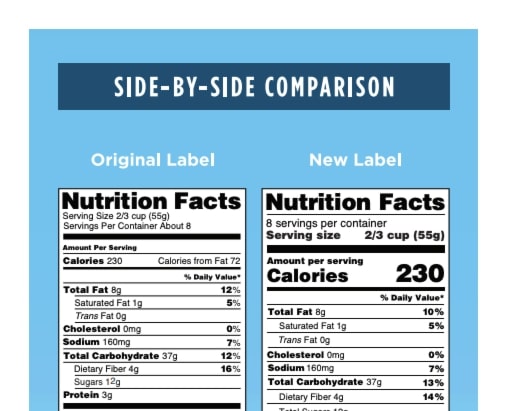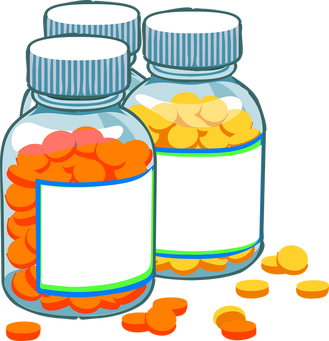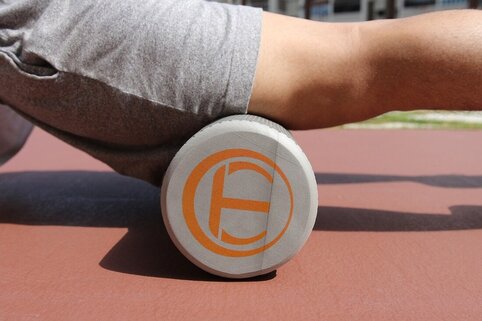|
Let’s face it, food labels can be really confusing. Consumers often have difficulty deciphering which parts are important and how to apply the information to their overall diets. You have probably seen some products sporting the new nutrition facts panel which has been slowly rolling out as companies change over their packaging to feature the updated version of the food label. The FDA is requiring several changes to better reflect the way people really eat and help us make informed food choices that support a healthy diet. The updated label sports a new visual design and reflects current scientific information, including the link between diet and chronic diseases. How is the new label different? You will notice the calories are more visually prominent and bolded. The percentages of calories and nutrients you will find on the label are based on a 2000 calorie diet. If you require more or less, you’ll need to adjust them yourself.
0 Comments
9 Health Benefits of Vitamin B12, Based on Science by Kaitlyn Berkheiser (www.healthline.com)10/29/2020 Vitamin B12, also known as cobalamin, is an essential vitamin that your body needs but cannot produce. It’s found naturally in animal products, but also added to certain foods and available as an oral supplement or injection. Vitamin B12 has many roles in your body. It supports the normal function of your nerve cells and is needed for red blood cell formation and DNA synthesis. For most adults, the recommended daily intake (RDI) is 2.4 mcg, though it’s higher for women who are pregnant or breastfeeding. Vitamin B12 may benefit your body in impressive ways, such as by boosting your energy, improving your memory and helping prevent heart disease. Here are 9 health benefits of vitamin B12, all based on science. Feeling physically empty and depleted is something everyone experiences throughout their life. There isn’t one set trigger for feeling this way, but it becomes more common as we age. Feeling lethargic can be caused by physical and mental stress. Maybe you’re responsible for a big task at work, and the anxiety of it all gets a bit too much to handle. It doesn’t help that as we age, we begin to neglect self-care as well. There is so much going on around us that we forget the importance of keeping ourselves afloat. All of this can have a definite impact on the way we live our lives. So how do we beat this feeling? What Are Some of the Physical Benefits of Playing Basketball? by Eric Winkler (www.dunkorthree.com)10/20/2020 Since its inception back in 1891, the game of basketball has been enormously popular around the world. Not only is the game fun to play, but it has a bundle of physical health benefits to go along with it. The game of basketball was created by James Naismith in one of the first physical education programs in the United States. The original intent of the game was to provide a good physical activity that his students could play indoors during the long cold New England winters. He more than succeeded in his goal and gave us one of the greatest athletic games in the world. Whether or not he knew it at the time, the game that Naismith invented is a game that provides numerous physical health benefits. It can involve moving at a fast pace, or a slow pace or sometimes even coming to a stop. There is lots of jumping, hand and arm movement and the need for full-body coordination. All of these things combined provide an exercise program that can rival a cardio workout routine designed by a professional trainer. The Benefits of Foam-Rolling — And 8 Foam Roller Exercises by Kieran Alger (www.openfit.com)10/15/2020 The Benefits of Foam-RollingThe idea behind foam-rolling exercises is that by applying direct and sweeping high mechanical loads to muscles and tissues, you stretch and massage the underlying tissues. This is believed to reduce thickening, adhesion, and tension of the fascia [connective tissue] and muscle, and can potentially reduce fatigue, improve recovery, and enhance range of motion. According to Peter Dipple, head of sports and massage at the London-based Ten Health & Fitness, “Foam-rolling can help promote blood flow and break down scar tissue. It could also help maintain normal muscle length, reduce pain and soreness, increase range of motion, and aid in recovery. Foam-rolling is a great way to help relax your muscles. Even those who are inactive could see benefits, as foam-rolling exercises can help relax muscles that may have become tight from sitting at a desk all day.” At the peak of the pandemic, there were new guidelines seemingly every day to help us stay safe and lower our risk of catching and transmitting COVID-19. Today, the advice is clear. Wash your hands regularly, wear a mask and keep your distance from others. There are other ways you can make healthy choices beyond virus prevention: changes to your diet, exercise and mindset. These lifestyle changes may not completely prevent your risk of catching coronavirus, but they can boost your immune system, help keep your spirits high and make your body stronger for whatever life throws at you. Here are some simple changes you can make to stay fit and healthy in the midst of a pandemic. Getting morning sunlight can help you sleep better at night. That might not seem to make any sense. However, there's evidence that it's true, especially if you have a circadian rhythm disorder. That's because of numerous factors, including:
It’s well-established that sleep is essential to our physical and mental health. But despite its importance, a troubling percentage of people find themselves regularly deprived of quality sleep and are notably sleepy during the day. Though there’s a wide range of causes and types of sleeping problems, expert consensus points to a handful of concrete steps that promote more restful sleep. Organizations like the CDC1, the National Institutes of Health2, the National Institute on Aging3, and the American Academy of Family Physicians4 point to the same fundamental tips for getting better rest. For many people, trying to implement all these strategies can be overwhelming. But remember that it’s not all-or-nothing; you can start with small changes and work your way up toward healthier sleep habits, also known as sleep hygiene. To make these sleep hygiene improvements more approachable, we’ve broken them into four categories: Exercise, Immunity and the COVID-19 Pandemic by Richard J. Simpson, Ph.D., FACSM (www.acsm.org)10/1/2020 The human immune system is a highly intricate network of cells and molecules designed to keep the host free from infection and disease. Exercise is known to have a profound impact on the normal functioning of the immune system. Having higher age and sex-adjusted scores for cardiorespiratory fitness and performing regular exercise of moderate- to vigorous-intensity exercise that fall within ACSM guidelines has been shown to improve immune responses to vaccination, lower chronic low-grade inflammation, and improve various immune markers in several disease states including cancer, HIV, cardiovascular disease, diabetes, cognitive impairment and obesity. The ongoing COVID-19 pandemic has raised a lot of questions regarding how exercise can protect us from infection by boosting immunity. This is becoming more pertinent as many of us have restricted access to the gyms and parks where we would normally undertake exercise and physical activity regimens. Compounding this problem are the known negative effects of social isolation and confinement on immunity. Athletes at all levels and ages commonly experience pain during practice and in competition. Identifying and appropriately managing acute and chronic pain is fundamental for short- and long-term health. This is especially true for adolescent athletes in whom inadequate or inappropriate pain management can lead to a lifetime of consequences including an increased risk of opioid misuse. A team physician consensus statement just released by the American College of Sports Medicine (ACSM) and five other professional sports medicine organizations shares guidelines to identify and manage pain in athletes ages 10 to 18. It urges team physicians and pediatricians to use nonpharmacologic treatments before prescribing opioids. “Adolescents are often initially exposed to opioids through prescriptions to treat pain,” said Stanley A. Herring, M.D., FACSM, the facilitator of the team physician project-based alliance and a clinical professor in the Departments of Rehabilitation Medicine, Orthopaedics and Sports Medicine and Neurological Surgery at the University of Washington in Seattle. “This paper gives health care providers, including team physicians, pediatricians and athletic trainers, a roadmap to navigate the diagnosis and treatment of chronic and acute pain in adolescent athletes.” |
The FDF LifestyleThis page includes blogs, healthy articles, inspiring pictures, exercise tutorials, music, etc. No content on this site, regardless of date, should ever be used as a substitute for direct medical advice from your doctor or other qualified clinician. Archives
April 2024
Visit this section daily to become more healthy and positive.Strengthen your mind by consistently learning new information.
New articles are uploaded throughout the week. |
Live |
Life |
To |
The |
Fullest |
Family Dreams Fitness LLC (www.familydreamsfitness.com) is not responsible or liable for any advice, course of treatment, diagnosis or any other information, services or products that you obtain through this site. You are encouraged to consult with your doctor with regard to this information contained on or through this website. After reading articles, watching videos or reading other content from this website, you are encouraged to review the information carefully with your professional healthcare provider.
You should understand that when participating in any exercise or exercise program, there is the possibility of physical injury. If you engage in any exercise or exercise program on this website, you agree that you do so at your own risk, are voluntarily participating in these activities, assume all risk of injury to yourself, and agree to release and discharge Family Dreams Fitness LLC from any and all claims or causes of action, known or unknown, arising out of Family Dreams Fitness LLC.











